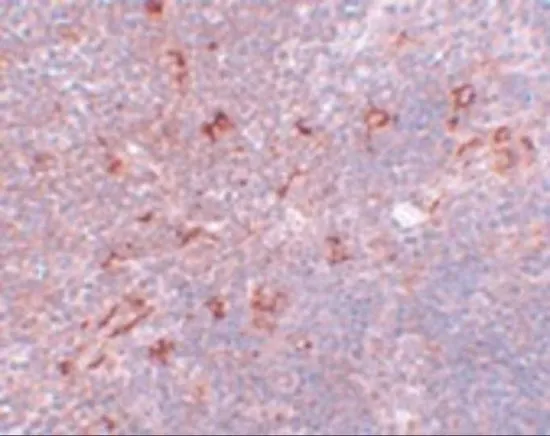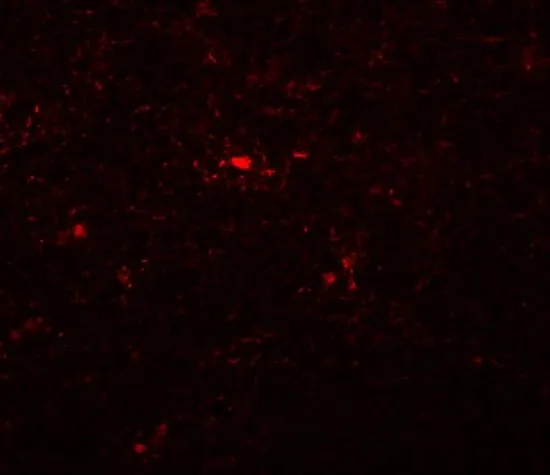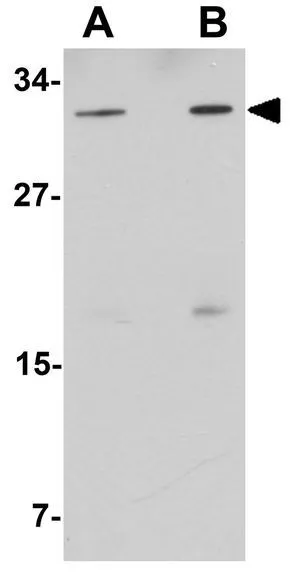
IHC-P analysis of mouse thymus tissue using GTX85214 NAT11 antibody. Working concentration : 5 microg/ml
NAT11 antibody
GTX85214
ApplicationsWestern Blot, ELISA, ImmunoHistoChemistry, ImmunoHistoChemistry Paraffin
Product group Antibodies
TargetNAA40
Overview
- SupplierGeneTex
- Product NameNAT11 antibody
- Delivery Days Customer9
- Application Supplier NoteWB: 1 - 2 microg/mL. IHC-P: 5 microg/mL. *Optimal dilutions/concentrations should be determined by the researcher.Not tested in other applications.
- ApplicationsWestern Blot, ELISA, ImmunoHistoChemistry, ImmunoHistoChemistry Paraffin
- CertificationResearch Use Only
- ClonalityPolyclonal
- Concentration1 mg/ml
- ConjugateUnconjugated
- Gene ID79829
- Target nameNAA40
- Target descriptionN-alpha-acetyltransferase 40, NatD catalytic subunit
- Target synonymsNAT11, NatD, PATT1, hNatD, N-alpha-acetyltransferase 40, N(alpha)-acetyltransferase 40, NatD catalytic subunit, homolog, N-acetyltransferase 11 (GCN5-related, putative), N-alpha acetyl transferase 40, N-alpha-acetyltransferase D, natD catalytic subunit, protein acetyltransferase 1
- HostRabbit
- IsotypeIgG
- Protein IDQ86UY6
- Protein NameN-alpha-acetyltransferase 40
- Scientific DescriptionN-terminal acetylation is one of the most common protein modifications in eukaryotes, occurring on approximately 57% and 84% on yeast and human proteins respectively. There are several N-terminal acetylating enzyme complexes (NatA - NatE). Unlike the other complexes, NatD is composed of a single protein, NAT11, and has recently been described to acetylate the Serine N-termini of histones H2A and H4 in yeast. The role these modifications play is unknown; yeast that do not express NAT11 grow at normal rates and have no observable phenotypes. The role of the human homolog is likewise unknown.
- Storage Instruction-20°C or -80°C,2°C to 8°C
- UNSPSC12352203






